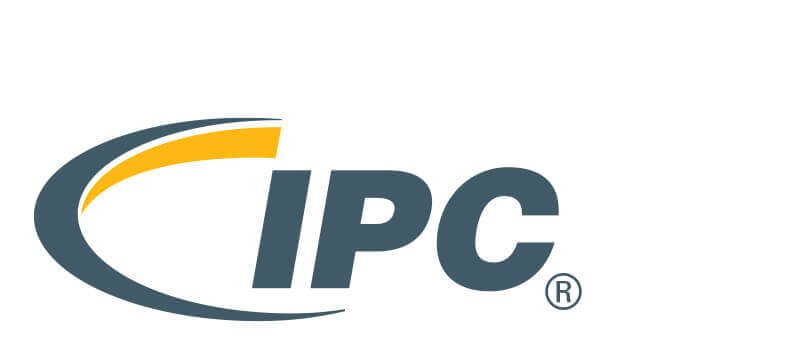PCB Trace offers some guidelines for PCB assembly standards to follow for ensuring a successful project. We also reveal some benefits for assemblers from using the IPC standards.
IPC or the Institute for Printed Circuits is also known as the Association Connecting Electronics Industries. This non-profit organization develops or publishes standards for guiding the procurement and assembly of electronic equipment. The electronics industry uses these acceptability standards widely. IPC standards typically drive the success of the global electronics industry.
By working with the electronics industry, IPC identifies the challenges the industry faces, and offers solutions by collaborating with its members. It gathers information from the electronics manufacturing industry for outlining appropriate standards and forming best practices.

IPC Standards for PCBs
Standards that IPC develops for PCBs are applicable to all stages of PCB development and production, starting from design, to fabrication, and final assembly. Acceptability standards are available for various stages of development, ensuring a high-quality product. Some important IPC standards include:
IPC-T-50: A listing of the terms and conditions the standards use.
IPC-2581 & IPC-2610: Standards for file format, product documentation, and design software.
IPC-2221. 2222. 2223. 2226. & 7351: Standards for design and land patterns.
IPC-4101, 4103, 4104, 4202, 4203, & 4204: Standards for substrates and base materials.
IPC-6011, 6012, 6013, 6017, & 6018: Standards for printed circuit board quality and reliability.
IPC-A-600: Standard for printed circuit board acceptability.
IPC-A-601: Standard for acceptability of electronic assemblies
IPC-J-STD-001, IPC-HDBK-001, IPC-A-820: Requirement criteria for soldered electronic assemblies.
IPC/WHMA-A-620, IPC-D-620, IPC-HDBK-620: Standards for requirements and acceptance of wire harness and cable assemblies.
IPC-A-630 & IPC-HDBK-630: Acceptability standards for electronic enclosures, their manufacturing, inspection, and testing.
IPC also has standards for advanced packaging, storage, and handling.
Relevant IPC Standards for PCB Design and Manufacturing
IPC-1752A: Standard reporting format for data exchange among designers, distributors, and manufacturers. Also supports reporting of components, materials, assemblies, and products.
IPC-2152: Defines current carrying capacity of copper traces and planes.
IPC-2221: Provides generic design and performance requirements of component mounting in PCBs and other interconnecting structures.
IPC-2581: Specifies generic requirements for information sharing among supply-chain participants. Provides a standard format for design data exchange for ensuring reliable production outcome.
IPC-4101: Specifies requirements for various PCB laminates or prepregs for building stackups.
IPC-4701: Offers design guidelines for via protection for ensuring manufacturability, quality, and dependability.
IPC-A-600 series: Defines acceptability criteria for PCBs, including three standard IPC classes for PCB assemblies:
Class 1: Covers consumer electronics and general products assembled at cheapest possible prices, and expected to function for a set duration.
Class 2: Covers laptops and home appliances. Includes service oriented products that are dependable, and with an extended lifetime.
Class 3: Covers electronic products with critical performance. Includes aerospace and medical equipment. Expected to operate nonstop in severe environments, with very high robustness and high reliability.
IPC-7351: Standard for specifying footprints and land-pattern requirements for SMT components. By following these specifications for land-patterns, SMT PCB designers ensure reliable solderability of electrical connections.
How to Use IPC Standards
By incorporating IPC standards in design guidelines, designers can verify them with effective checklists during the development process. This allows guarantee of high performance and user safety for products that customers also prefer. By adhering to IPC standards, designers, and manufacturers certify a PCB product to be of exceptional quality.
Advantages of Using IPC Standards
The electronics industry benefits a lot from following the IPC standards. Advantages include:
Enhancement of product value and consistency: By conforming to IPC standards during the development and manufacturing processes, OEMs can produce high-quality products, improve product reliability, and enhance customer satisfaction. Therefore, IPC standards contribute substantially to product consistency and overall value in the market.
Enhanced communications between contributors: It is easier to communicate between groups when they all follow IPC standards. The common terminology results in clear interpretations of requirements for each deliverable, thereby avoiding ambiguities in communication.
Enhanced brand identity: Conforming to IPC standards builds brand value while setting a good reputation. In confirms the commitment of the manufacturer towards product quality. This not only brings in more collaboration, but also provides ample opportunities for expanding the business.
Lowering costs: By adhering to IPC standards, manufacturers can improve their supply-chain efficiency. This can not only reduce the requirements of resources, but also helps to substantially lower production costs.
Seamless Workflow: With all members diligently adhering to IPC standards, there is significant decrease in faults and delays. This results in a smooth flow in the development processes and improves productivity.
Conclusion
As an experienced manufacturer, PCB trace showcases the above advantages to justify the value of IPC standards for PCBs. Rather than focusing on a few details in assembly, the recommendation is to integrate the entire process with a strong foundation on the basis of IPC standards. Conforming to these standards, it is easy to identify small manufacturing faults in the assembly line to improve the productivity.
